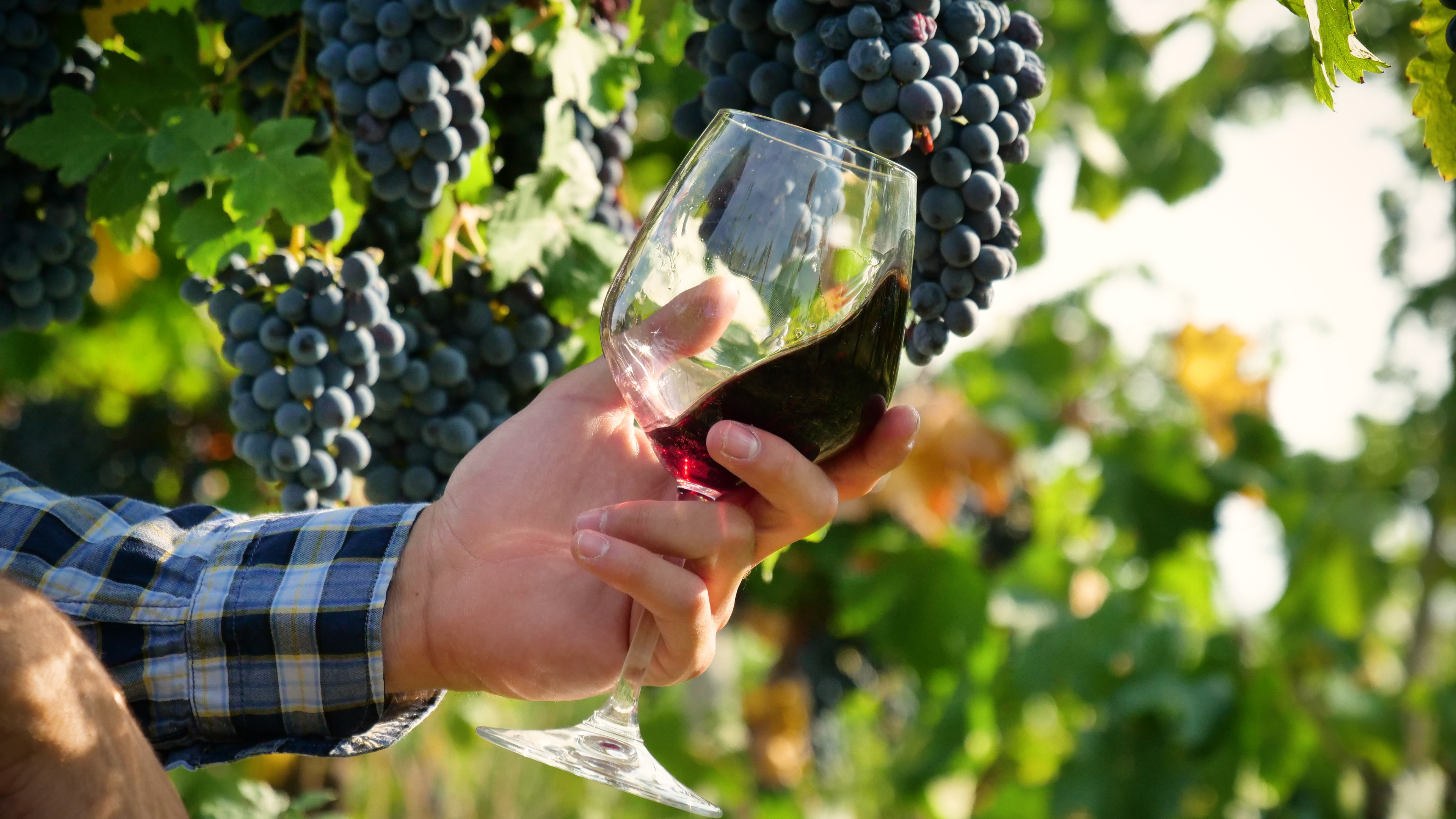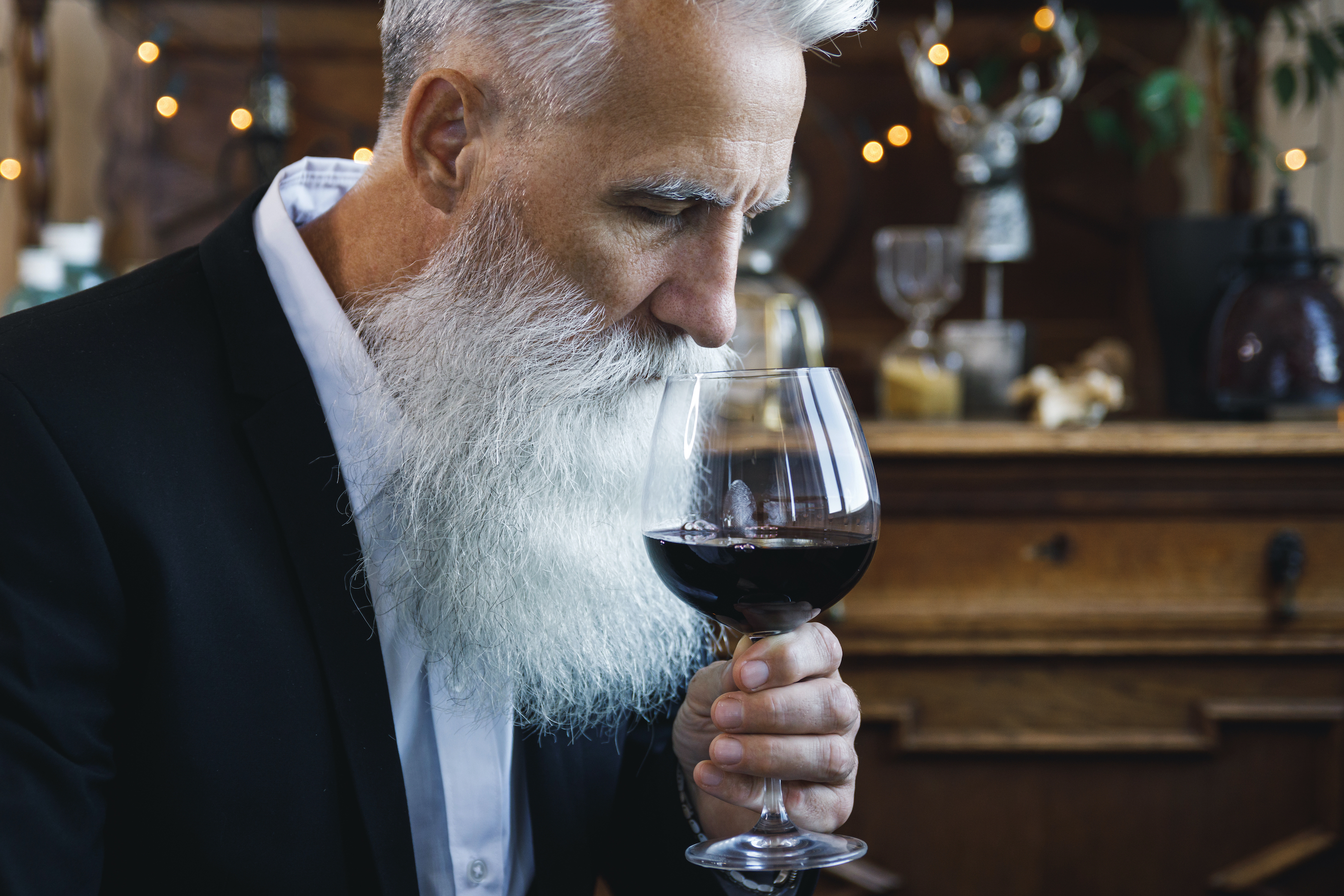Wine professionals, who know an awful lot more about wine than I do, often say, ‘Taste is subjective.’ Subjectivity, objectivity – that’s core business in philosophy. One question that arises for every ordinary drinker and lover of wine is actually a deeply philosophical question. Is the taste of the wine just happening in me as a matter of my subjective response to it? Or is the ultimate taste of the wine in the glass, in the wine? Where is the taste or flavour of that wine? And can there be such a thing as the true taste of a wine, something which we can perceive and get right or get wrong? I think there is.
The philosophy of wine
Professor and Director of the Institute of Philosophy
- Smell and taste are often considered less important, but these senses are key to connecting us to the world around us.
- Wine tasting opens up philosophical questions about subjectivity and objectivity. Is taste a matter of subjective experience? Or can we perceive the objective quality of a wine?
- Through prompts and guiding questions, we can use our senses to discover not just what we like, but why we like it.
The power of smell
When we understand that our knowledge of the world first comes to us through our senses, we tend to think of the senses of sight and hearing, perhaps touch, as the higher senses – the ones that are most important and relied on. Taste and smell tend to receive much less attention in philosophy. People tend to think of the sense of smell as relatively unimportant, and many people will imagine that the experience of smelling is just a mere modification of our consciousness, as philosopher Bill Lycan notes; they think it’s not telling us anything.
Yet the sense of smell is very important to connect us to the world around us. Our sense of smell is there to tell us about smoke, or fire, or danger, or even the presence of food. A sense of smell is often used to give us a sense of somebody’s emotional state. We can smell fear, although that’s very unconsciously processed. The sense of smell is also used in tasting food. What we call “tasting” is not mainly coming from the tongue. The tongue just gives us salt, sweet, sour, bitter, perhaps savoury. But think of all the flavours we can taste: mango, melon, strawberry, pineapple. We don’t have pineapple receptors on our tongues. All of that is coming from smell.
From science to subjective experience
My interest as a philosopher of perception in the neglected senses, taste and smell, leads me to one of the more complicated and interesting topics: how we can taste and appreciate wine. Nowadays, we know that a lot of science goes into winemaking. We have tremendous knowledge of how to do better work in the vineyards, how to cultivate the grapes and, indeed, when turning the grapes into wine in the winery, a lot of science, oenology, goes into the process of fermentation and the control of the process to make sure we’re delivering better wine.
Somehow all of that science is in the service of delivering a certain subjective experience in the minds of the drinkers. There’s a philosophical issue here: in looking at wine, we’re looking at how we get from science to subjectivity. How do we get all the way from what we do – cultivating the grapes, crushing them, fermenting them, storing them in barrels, putting them in bottles – to the ultimate experience that people have where they find a wine extraordinary, beautiful, delicious? I’m very interested in whether or not there is an objectivity to the taste of a wine or whether it’s a purely subjective matter.

Photo by HQuality.
Exercising discrimination
When we’re tasting wine, there is very little difference between the novice and the expert at the level of how their perceptual systems work. If both people have a good sense of smell, if they have a similar number of taste buds on the tongue, they’re probably getting something like the same sensory experience. But there is a difference between the way they can understand and appreciate what’s happening to them at that time.
The person who knows that they’re drinking a Burgundy – that this is a Burgundy from 2006, it was a very good year and the wine is now very well aged – is able to take pleasure in the way they exercise their discrimination, in the way they notice what’s going on. Is it still in good shape? Has it changed from being soft raspberry fruit into something a little more gamey, a little earthier?
We can give an analogy: if somebody walks into a bar and looks at a TV set, and there’s a football match taking place and someone scores a goal, someone who knows nothing about football may see the same events of the striking of the ball and the ball going into the back of the net. But for the person who knows that this is the last moment of a cup final – it’s two-all, this will be the deciding goal – it’s a very different experience. The overall experience with knowledge tells you what you’re getting from your senses and what it means. The same is true when drinking wine. There’s an additional knowledge and pleasure to be had. But as a philosopher, I’m also interested in whether or not the quality of a wine is something we perceive.
Can we perceive the quality of wine?
We can perceive the tastes and flavours, and we have to be taught how to perceive the level of acidity in the wine. Why is that astringent, dry-mouth feeling happening? It’s coming from the tannins in the wine. What does that mean? These are properties of polyphenols in the grape skins. At first, it’s just a sensation in the mouth, and a lot of people say, ‘I don’t like that bitter, astringent taste.’ But eventually, when you tell them that that’s the taste of what the skins of the red grape contribute to the wine, they stop thinking about just their own sensation. They start feeling the tannins in the wine, the way they move from the inside out, and they start noticing: are they fine-grained? Are they coarse-grained? Are they hard or soft?
We learn to investigate and explore a wine, to interrogate it with our senses when we know what we’re looking for. But the question is, can we perceive the quality of a wine? Is that perceptible, or is that just a matter of taste – de gustibus non est disputandum – just a personal opinion? I don’t think it is.

Photo by ALPA PROD.
The quality of a wine is something that we should separate from whether we like it or not. Think of questions in aesthetics. Can people recognise the beauty of an artwork, or even of a person, and still say they feel unmoved by it? ‘This person is very attractive. They’ve got classical beauty. But I don’t find them personally attractive.’ Or can somebody say, ‘This is a very beautiful, well-made wine of a certain grape variety from a particular vintage. But nonetheless, it’s not for me’? Wine critics can do that.
From wine novice to expert
The novice isn’t somebody who can’t taste what’s in a wine. They’re someone who hasn’t yet learned how to discover what’s in a wine. And the way they discover this is not by an expert standing in front of them and using a whole lot of vocabulary that leaves them cold.
The secret is to give the novice ways of discovering in themselves and how they respond to the wine what’s going on. You can ask somebody, ‘Do you find the wine fruity?’ And people will often say yes. ‘Is it black fruit, or is it red fruit?’ People often have a very definite opinion. ‘No, it’s more black fruit.’ ‘Okay, so is it more like blackberry or black currant?’ And now, people find they have the means to explore and investigate what they’re tasting.
You can talk to them about the texture of the wine. ‘Is the wine silky or velvety, or is it more like satin?’ Even though these are fabrics we touch with our fingers, we can convert that to how it feels on the tongue. And people are very happy to readily go from satin to velvet or silk. They know what they are feeling and what they’re sensing.
The way we learn to taste, and the best way to bring novices up to the level of experts, is not to bombard them with technical vocabulary. It’s allowing them to explore with their own senses, with a few prompts and guiding questions, and discover: what is this wine doing to me, and what am I experiencing in it? The way they interrogate their own experience will eventually give them a more nuanced understanding of not just what they like, but why they like it.
Algorithm recommendations or human guides?
What people usually want when they’re on their wine journey is to have something interesting, new, novel, but they also want to make sure it’s something good. Recommendation algorithms go for averaging, so you have more meme than masterpiece; you don’t always have something interesting, quirky and different. For that, you need a human guide. My colleagues and I have been looking at recommender algorithms, and we find that if you were going to get the best recommendations – the ones people really like – it’s not done by the recommender app, but it’s also not necessarily done by the expert alone.
A combination of experts and novices will provide you with a better guide to what you like and what you should next try than a recommender app. That’s because although a digital app will survey a lot of people, and find out what they are buying and what they would recommend, an expert will be able to drill down into which wines you like and what it is about those wines that made them appealing to you. The expert is better able to project and generalise from there to new cases than the averaging done by an app. So I think we’ll still need wine experts.
What makes wine philosophical?
We’re interested in questions about subjectivity and objectivity. I have a certain subjective experience; I’m a subject experiencing this wine when I drink it. But am I in touch with its objective properties? Is the taste, flavour and aroma of the wine just an experience in my response, or is it in the wine? If it’s in the wine and there’s something objective to get right or wrong, how can my perception put me in touch with the real true properties of a wine?

Photo by BLACKDAY.
Similarly, there are questions that remind us of philosophical issues in aesthetics. Is there such a thing as the quality of a wine that we could recognise as being different from whether we simply like it or not? When wine critics rate and judge a wine to be exceptional, is that just snobbery, personal preference, or are they recognising there are qualities of elegance and finesse and beauty in the wine, which they could recognise whether they liked it or not? Is there such a thing as genuine appreciation and not just prejudice?
These questions are core philosophical questions. A wine is a very complex, non-natural object that requires skill, craft, nature, sunlight and human endeavour to produce. When we recognise its quality and its beauty, we’re celebrating it as a human achievement. And I think that’s worth commemorating.
Discover more about
the philosophy of wine
Smith, B. C. (2020). Tasting Flavors: An Epistemology of Multisensory Perception. In D. E. Gatzia, & B. Brogaard (Eds.), The Epistemology of Non-Visual Perception. Oxford University Press.
Smith, B. C. (2019). Getting More Out of Wine: wine experts, wine apps and sensory science. Current Opinion in Food Science, 27, 123–129.
Smith, B. C. (Ed.). (2016). Questions of Taste: The Philosophy of Wine. Oxford University Press.